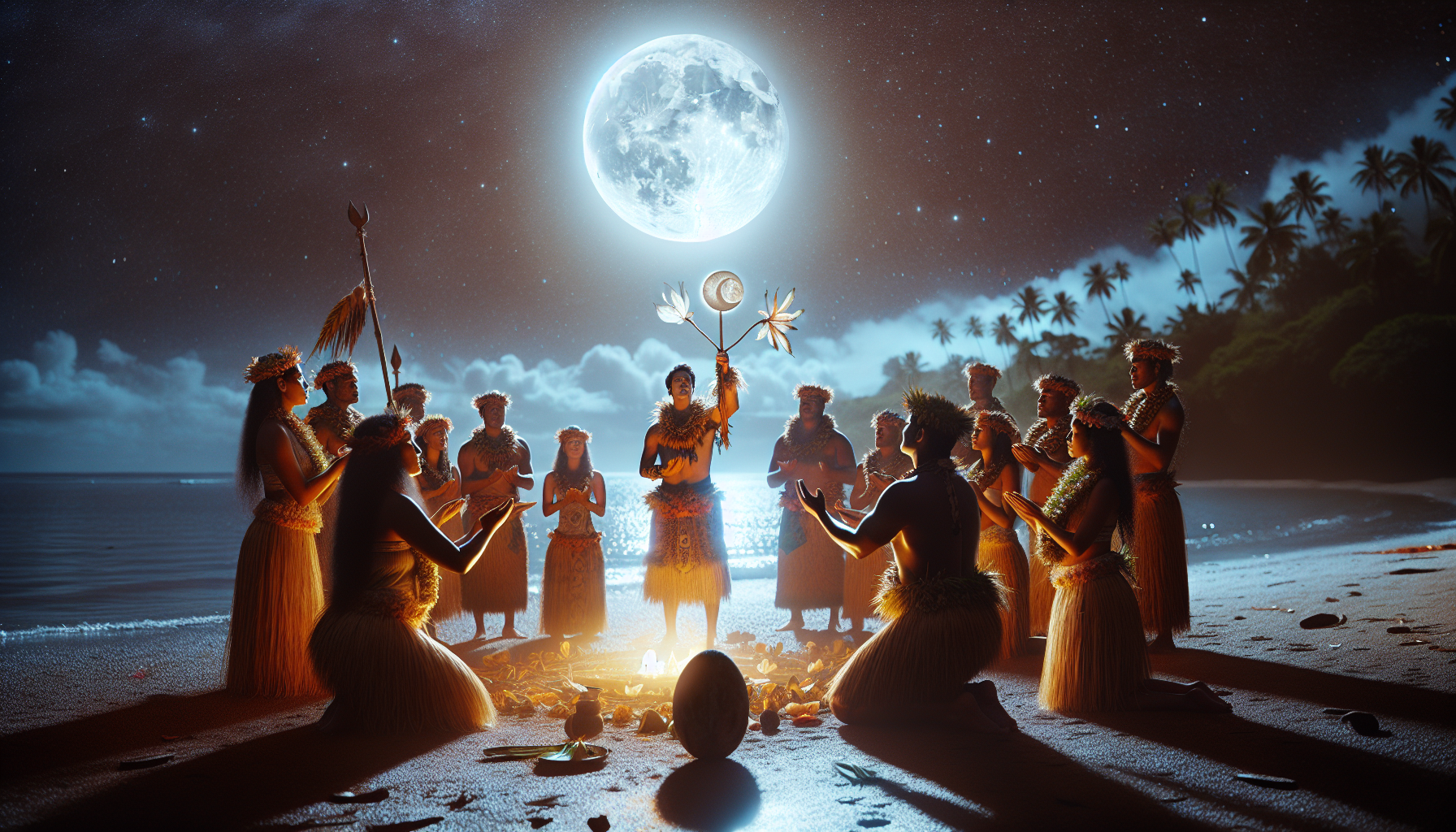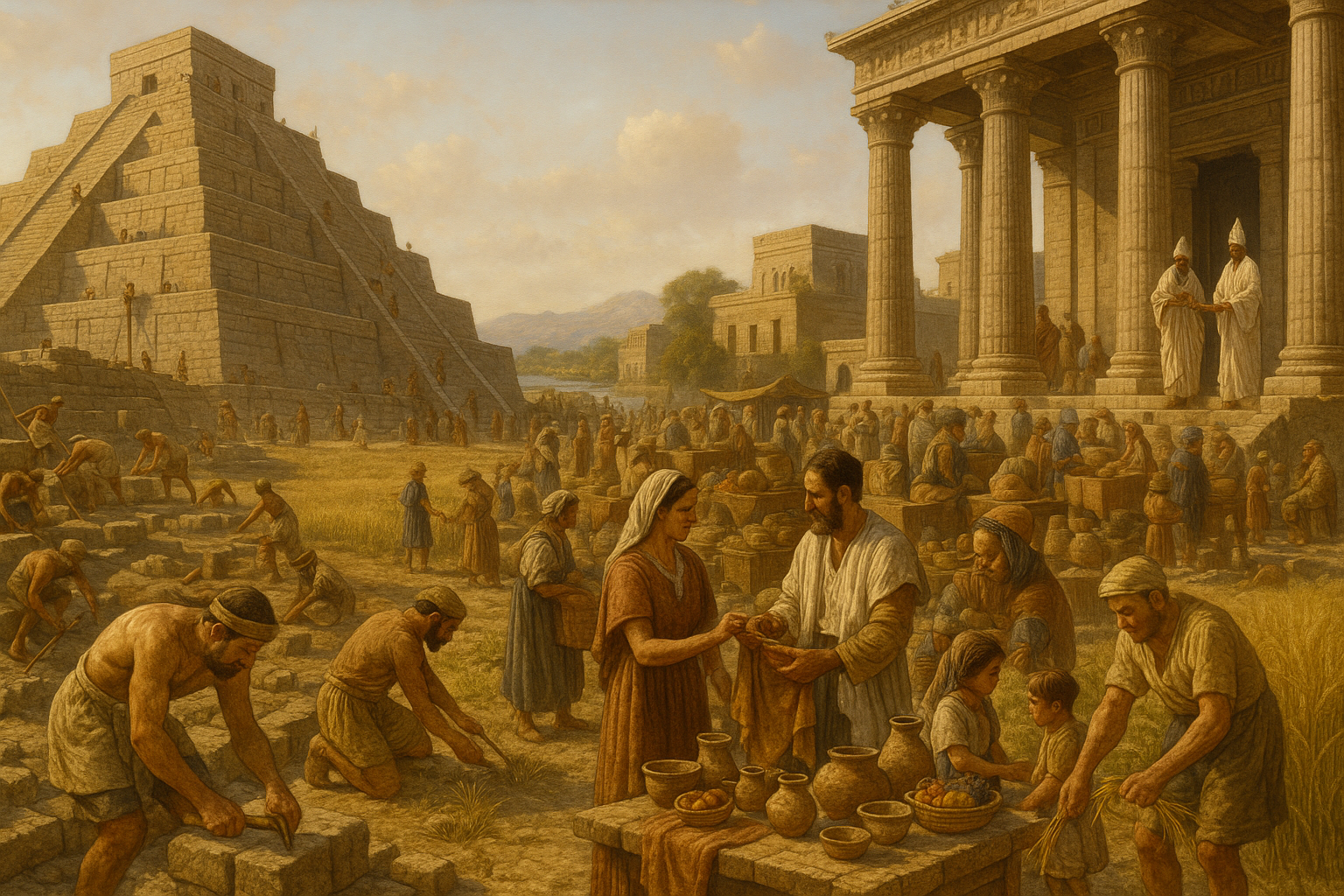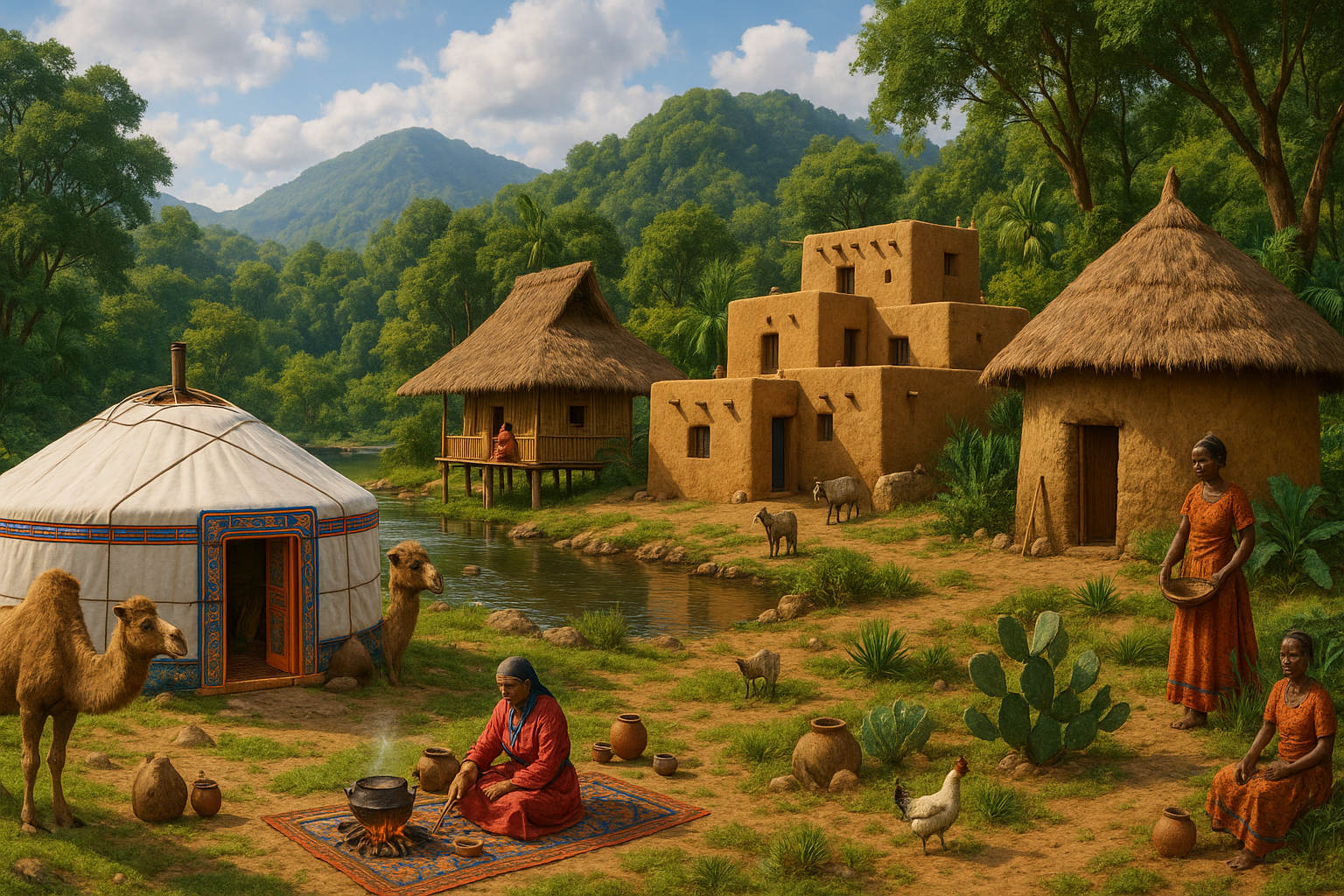In the heart of the vast Pacific Ocean lies a tapestry of islands where ancient cultures have thrived for centuries. Among these, the Polynesian communities stand out with their rich traditions and deep-rooted spiritual beliefs. One of the most intriguing aspects of these cultures is their profound connection to the moon, manifesting in what can be described as lunar cults. These practices, shrouded in mystery and awe, offer a fascinating glimpse into how these communities interpret the celestial wonders above them.
Lunar cults in Polynesian societies are not merely about worship; they encompass a holistic understanding of life, time, and the universe. The moon plays a pivotal role in guiding agricultural practices, navigating the vast ocean expanses, and orchestrating social and spiritual rituals. This celestial body serves as a cosmic clock, helping these communities synchronize their lives with the natural world. The enigmatic rituals and ceremonies surrounding the moon are reflective of a deep-seated reverence for its power and influence, making it a cornerstone of Polynesian spirituality.
As we delve into this captivating topic, we will explore the various ways in which lunar worship manifests across different Polynesian islands. Each community has its unique interpretation and practices, yet they all share a common thread of celestial admiration. From chants and dances that mimic lunar phases to symbolic artifacts and temple structures, the diversity of expression is as vast as the ocean that connects these islands. Understanding these practices offers invaluable insights into the broader Polynesian worldview, where the natural and supernatural are intricately intertwined.
In this exploration, we aim to unravel the layers of mythology and tradition that surround lunar cults in Polynesia. By examining historical records, oral traditions, and the latest anthropological studies, a clearer picture emerges of how these communities have sustained their lunar devotion through generations. The journey through these celestial beliefs not only enriches our understanding of Polynesian culture but also invites us to reflect on the universal human fascination with the night sky. 🌕✨
The Roots of Lunar Cults in Polynesian Mythology
In Polynesian communities, the moon holds a place of immense significance, often viewed as a powerful celestial entity that influences both the natural world and the spiritual realm. This celestial connection is deeply embedded in the mythology of Polynesian cultures, where the moon is personified in various deities and mythological figures. These stories and beliefs form the foundation of lunar cults, which have been integral to the cultural and spiritual life of these communities.
The moon is often associated with the goddess Hina, a prominent figure in many Polynesian legends. Hina is revered as a symbol of femininity, fertility, and renewal. She is said to inhabit the moon, and her presence is believed to guide the cycles of nature and life. This connection between Hina and the moon emphasizes the vital role that lunar cycles play in agriculture, fishing, and other aspects of daily life in Polynesia.
Lunar cults in Polynesia also reflect a broader understanding of the universe and its rhythms. The phases of the moon are observed meticulously, with each phase holding specific cultural and spiritual significance. For instance, the new moon is often seen as a time for new beginnings and spiritual cleansing, while the full moon is a time of celebration and reflection. These beliefs underscore the importance of the moon as a guiding force in Polynesian culture, shaping not only religious practices but also societal norms and traditions.
Rituals and Practices: The Heart of Lunar Cults
Lunar cults in Polynesian communities are characterized by a variety of rituals and practices that honor the moon and its deities. These rituals are often communal events, bringing people together to celebrate and connect with the celestial forces that govern their lives. They provide a framework for understanding the world and offer a means of expressing gratitude and reverence for the natural order.
One of the key aspects of these rituals is the use of chants and songs, which are believed to carry spiritual power and invoke the presence of lunar deities. These chants often recount mythological stories and pay homage to the moon, strengthening the bond between the community and their celestial ancestors. The rhythmic nature of these chants also mirrors the cyclical patterns of the moon, reinforcing the connection between human life and the natural world.
Offerings are another important element of lunar cult practices. These offerings, which can include food, flowers, and handcrafted items, are made to the moon and its deities as a sign of respect and devotion. The choice of offerings is often guided by the current phase of the moon, with each phase having specific associations and meanings. For example, the waxing moon might be associated with growth and abundance, while the waning moon represents release and transformation.
The Social and Cultural Impact of Lunar Cults
The influence of lunar cults extends beyond religious practices, permeating various aspects of social and cultural life in Polynesian communities. The moon’s cycles are intertwined with daily activities, from agriculture to navigation, and they play a crucial role in the community’s social structure and cultural identity.
In agriculture, lunar phases guide planting and harvesting schedules, ensuring harmony with natural cycles and promoting sustainability. This alignment with the moon’s rhythms helps to optimize crop yields and maintain ecological balance, demonstrating the practical wisdom embedded in lunar cult practices. Additionally, lunar calendars are used to mark important cultural events and festivals, structuring the community’s social life around celestial events.
Lunar cults also contribute to the preservation of oral traditions and storytelling, which are essential components of Polynesian culture. Through the retelling of myths and legends associated with the moon, cultural knowledge and values are passed down from generation to generation. This oral tradition fosters a sense of continuity and belonging, reinforcing community bonds and preserving cultural heritage.
Navigation and the Moon: Guiding the Voyages
The moon has historically played a vital role in navigation for Polynesian seafarers, who are renowned for their extraordinary voyaging skills. The ability to read celestial signs, including the phases of the moon, was crucial for navigating the vast expanse of the Pacific Ocean. Polynesian navigators, known as wayfinders, relied on their deep understanding of the stars, winds, and currents, with the moon serving as a key point of reference.
The moon’s position in the sky, along with its phases, provided valuable information for determining direction and timing during long sea voyages. By observing the moon, wayfinders could estimate distances, identify their latitude, and make strategic decisions about their routes. This celestial knowledge was passed down through generations, forming an integral part of Polynesian maritime tradition.
The Future of Lunar Traditions in Polynesia
As Polynesian communities continue to evolve in the modern world, the preservation and revitalization of lunar traditions remain a priority. Efforts are underway to document and share these practices with younger generations, ensuring that the wisdom and cultural heritage of lunar cults endure. This involves a renewed focus on education and cultural exchange, both within Polynesia and beyond.
There is a growing recognition of the importance of maintaining a connection with the natural world and honoring the celestial forces that have guided Polynesian communities for centuries. This connection is seen as essential for fostering sustainable practices and promoting cultural resilience in the face of environmental and social challenges.
Furthermore, the revival of lunar traditions has the potential to strengthen community bonds and foster a sense of identity and belonging. By embracing their celestial heritage, Polynesian communities can celebrate their unique cultural legacy while adapting to the changing world. The mysteries of lunar cults offer valuable insights into the interconnectedness of life, encouraging a harmonious relationship with the universe and a deeper understanding of humanity’s place within it.
| Lunar Phase | Significance | Associated Rituals |
|---|---|---|
| New Moon | New beginnings, spiritual cleansing | Offerings and chants |
| Waxing Moon | Growth, abundance | Planting and communal gatherings |
| Full Moon | Celebration, reflection | Festivals and storytelling |
| Waning Moon | Release, transformation | Rituals of letting go |

Conclusion
The exploration of lunar cults within Polynesian communities unveils a profound celestial connection that is deeply interwoven into the cultural, spiritual, and social fabric of these societies. By embracing the mysteries of lunar traditions, Polynesian cultures maintain a harmonious relationship with the natural world, ensuring the perpetuation of their rich heritage. 🌕✨
In conclusion, the moon serves as both a spiritual beacon and a practical guide, influencing everything from agricultural practices to navigational techniques. This dual role underscores the moon’s importance as a cultural and spiritual symbol, shaping the daily lives and belief systems of Polynesian communities. Through rituals, offerings, and chants, these communities honor the lunar deities and celebrate the celestial forces that govern their existence.
Moreover, the preservation and revitalization of lunar traditions are pivotal for fostering cultural resilience and identity in the face of modern challenges. By documenting and sharing these ancient practices with younger generations, Polynesian communities not only safeguard their cultural legacy but also promote sustainable practices and a deep respect for the environment. This timeless connection to the cosmos offers invaluable insights into the interconnectedness of life and encourages a deeper understanding of humanity’s place within the universe.
Embracing the celestial connection, Polynesian communities continue to navigate the complexities of contemporary life, grounded in the wisdom and traditions of their ancestors. As they adapt to a changing world, the mysteries of lunar cults remain a guiding light, enriching their cultural tapestry and offering a timeless bridge between the past and the future.
Toni Santos is a visual storyteller and experimental artisan whose work explores the strange frontiers where science meets art. Fascinated by the forgotten, the obscure, and the wonderfully absurd, Toni brings bizarre scientific experiments to life through provocative visual narratives and handcrafted creations that blur the line between curiosity and discovery.
His journey is rooted in a passion for the eccentric side of science — from electric shocks on cadavers to botany in hostile environments, from Victorian medical oddities to animal behavior gone rogue. Each project Toni undertakes sheds light on real (and sometimes questionable) scientific ventures that push the boundaries of human understanding.
With a background in visual design and hands-on craftsmanship, Toni blends artistic precision with conceptual boldness. His creations aren’t just decorative — they provoke, disturb, and invite the viewer to reconsider what counts as science, progress, or even sanity. Often inspired by true experiments — like galvanic resurrection, psychological endurance tests, or 19th-century pseudo-science rituals — Toni’s work reanimates these bizarre chapters of history with aesthetic intrigue and critical reflection.
As the creative force behind Vizovex, Toni invites you to explore a world where the strange becomes symbolic, the grotesque becomes beautiful, and every experiment tells a story worth unearthing.
His work pays tribute to:
The brilliant madness of forgotten experiments
The symbolic power of science at the edge of reason
The beauty in questioning what we think we know
Whether you’re a curious mind, a lover of scientific history, or simply drawn to the uncanny, Toni welcomes you to explore a realm where aesthetics and absurdity collide — one experiment, one mystery, one creation at a time.





